France Road Trip Guide
Introduction
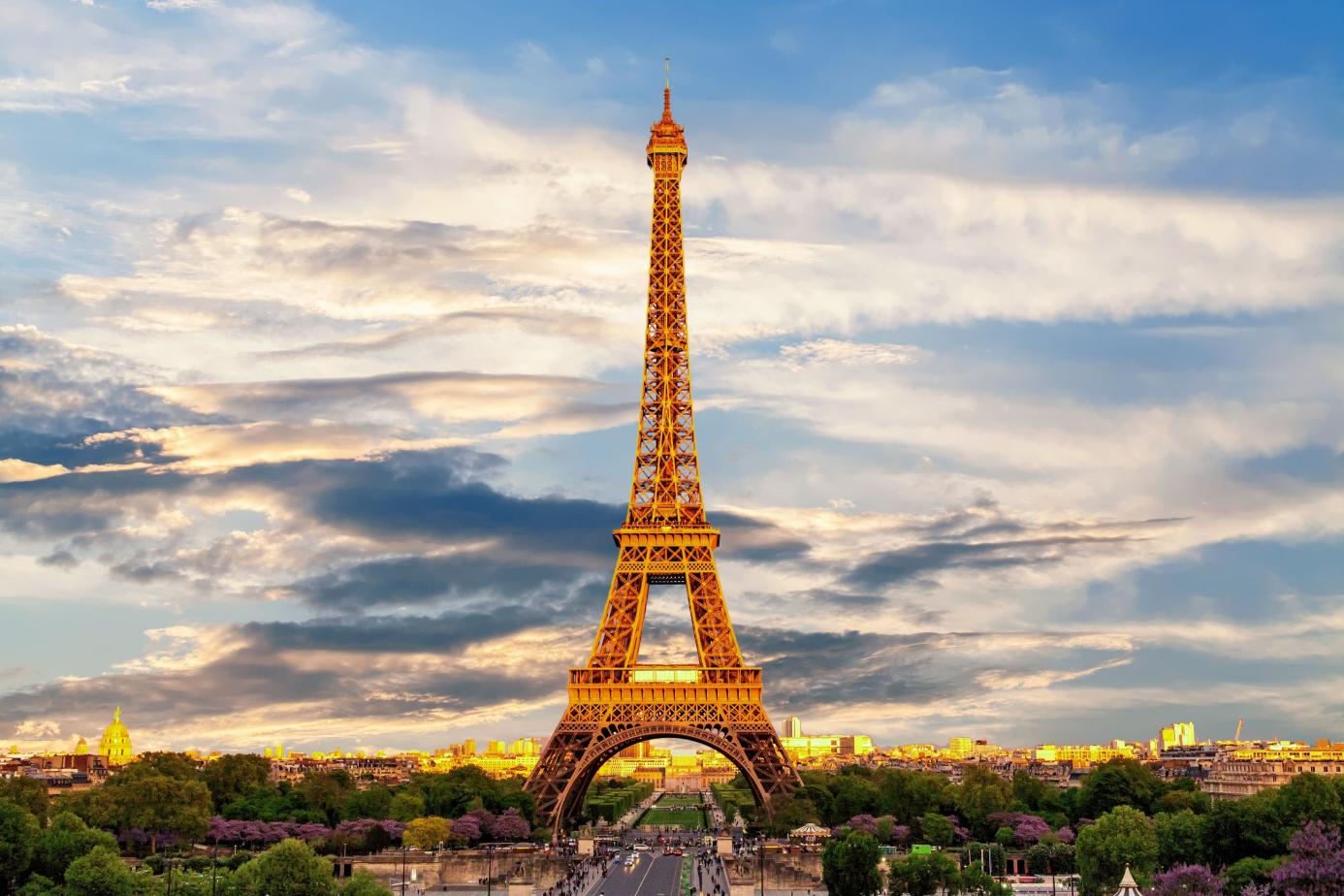
France is a land of breathtaking landscapes and rich cultural heritage, making it the ideal destination for an unforgettable road trip. Picture yourself marveling at the mystical Mont-Saint-Michel, driving along the dramatic cliffs of Étretat, and savoring the wines along the Alsace Wine Route. From the grand châteaux of the Loire Valley to the sun-drenched beaches of the French Riviera, each region unfolds its own story and charm. Together, let’s set off on this incredible journey, where the open road invites us to explore and create lasting memories.
Car Rental Tips
Book in Advance
Generally, we recommend that you make your reservation one month in advance so that you could choose the desired vehicle and date.
If you proceed directly to the car rental store without a booking, it is likely that the car you need might be unavailable.
If you are already a QEEQ diamond member, you only need 1$ to freeze your booking and make the rest of the payment before pick-up, which does not affect your credit card limit.
Required Documents
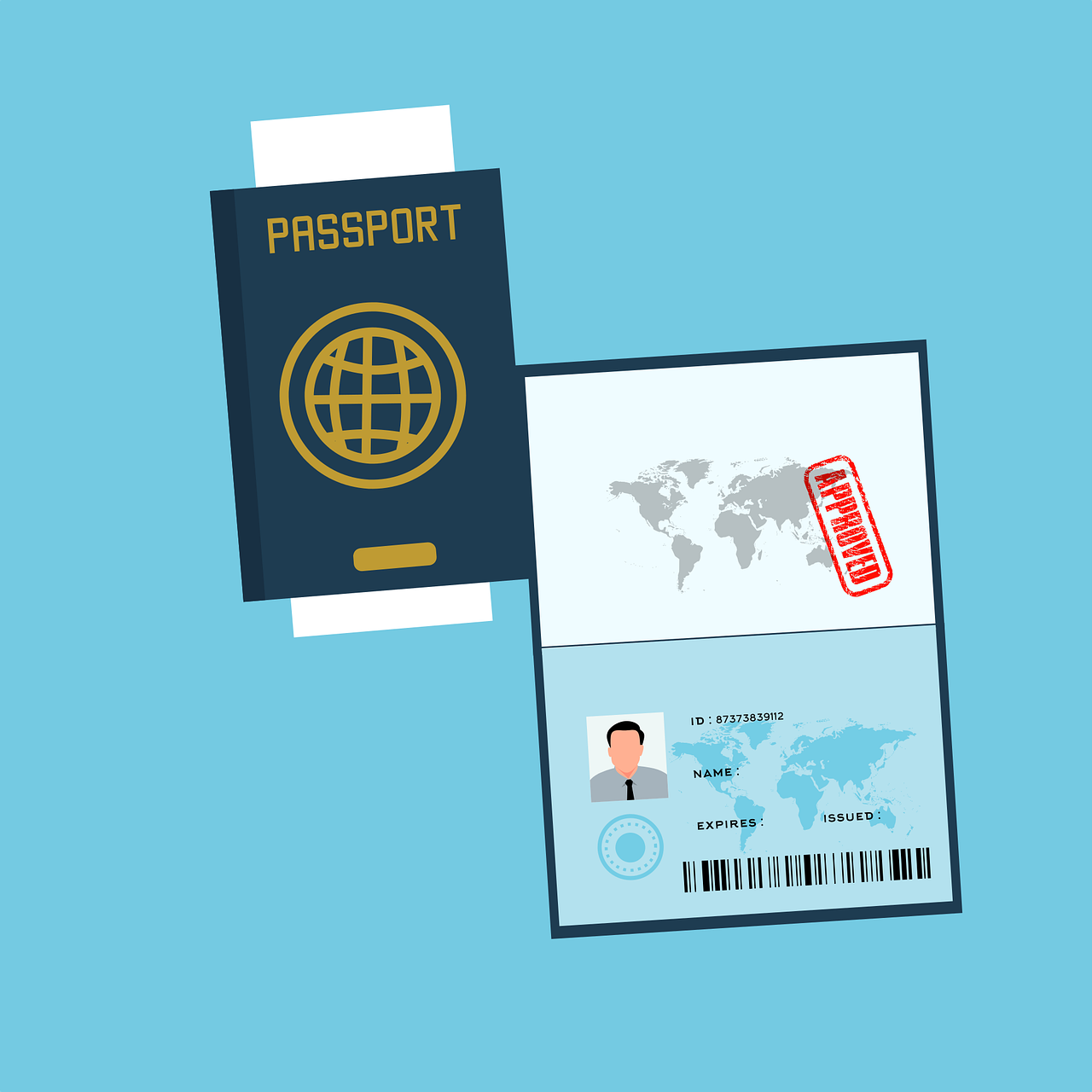
Passport, Driver’s License, IDP (Optimal), Credit Card
International Driving Permit (IDP) is highly recommended, which allows you to drive legally in countries that need one.
If it is inconvenient for you to apply an IDP, generate a free driver’s license translation on QEEQ.com (Japanese site only).
Tips: Please be aware that most rental companies require drivers to have held their license for at least one year. Additionally, some companies have age restrictions, and drivers under a certain age may need to pay a young driver fee.
Other Essentials to Consider
- Car Phone Mount
As France law prohibits the use of mobile phones while driving, having a phone mount in your car is highly recommended.
- Child Seats
France regulations require children to use appropriate car seats, or you could face significant fines. You can easily add a child seat to your booking on the rental car order page.
Car Choices
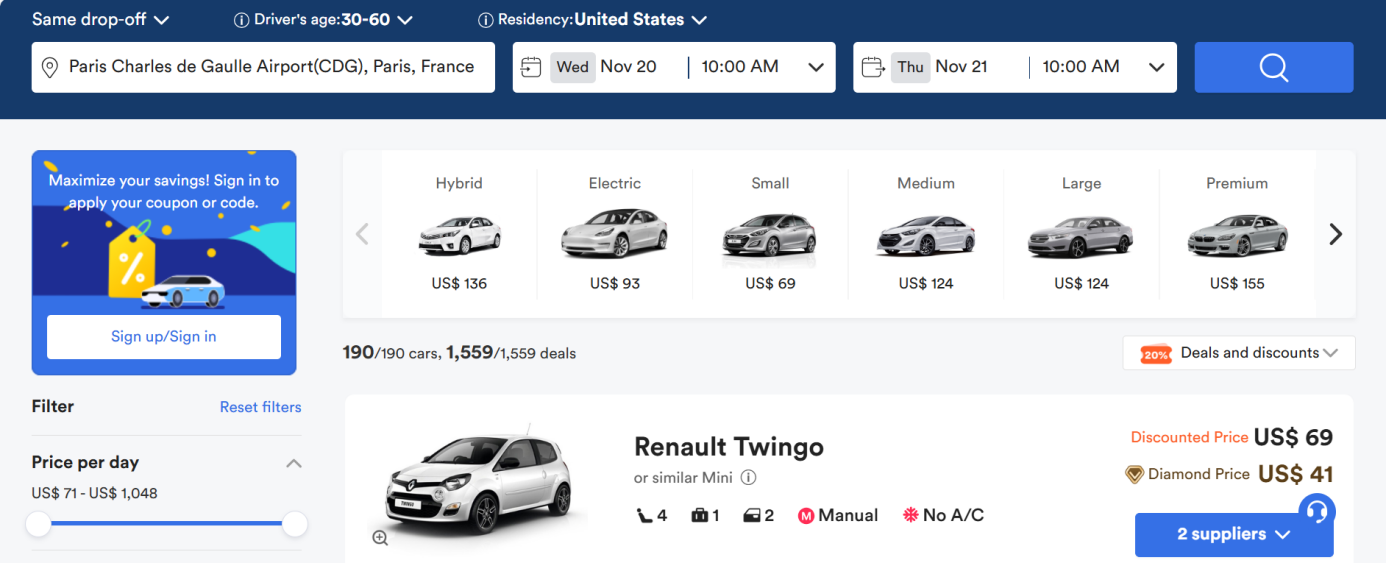
The choice of your car depends largely on the duration of your trip, passenger number, luggage amount and road conditions.
- City Driving for small groups (1-3 passengers)
If you are a couple, or travel with a friend or two, or if you travel alone, a reasonably priced small car would be a good choice.
Compact size cars have 4 to 5 seats. We recommend sparing one passenger capacity so you could relax and have more space.
- 4 to 5 passengers including children and elderly
Medium and large size cars are recommended. These models could still possess a fair mount of space with 2 to 3 suitcases. SUVs are suitable for hybrid road conditions. Eco-friendly cars such as the Prius could save your spend on gasoline. Choose what you need giving you peace of mind on long trips.
- Traveling in a group of 6 or more
It would be a wonderful experience to choose a van for everyone to have his or her own seat. These models accommodate a passenger capacity from 7 to 12 people. While it is noticeable that large cars cannot make quick and sharp turns. So we recommend renting two small or medium-sized cars if you spend a lot of time driving through towns.
Online Booking Process
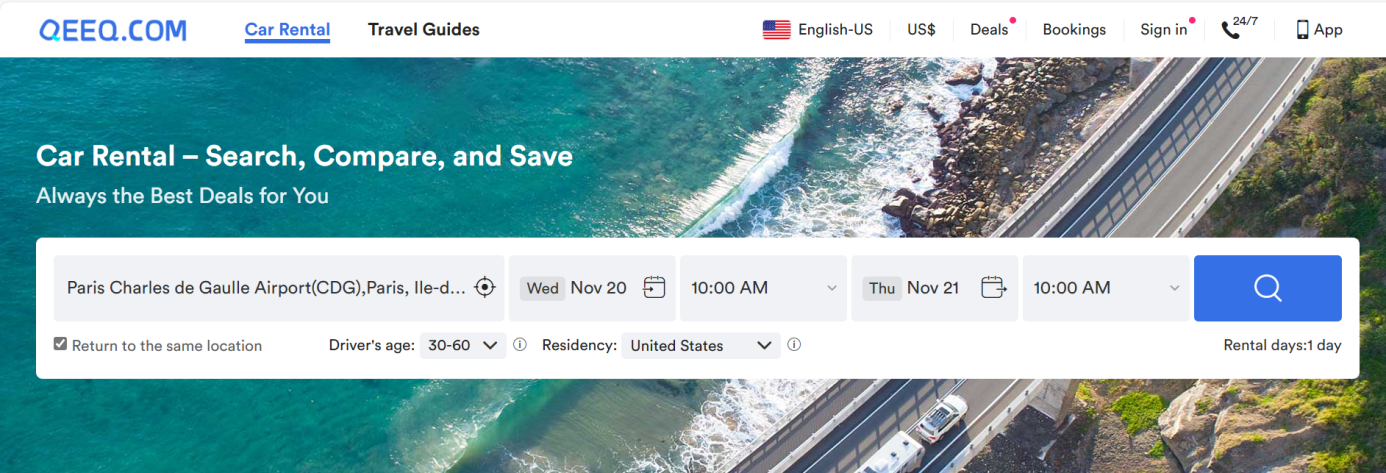
We are endeavoring to make your booking as convenient as possible. Enter our website QEEQ.COM, log in, enter the required information, and follow the instructions, you are free to rent your desired car.
Insurance
What Insurances Are Available?
*For Autopilot Cars:
- Insured: Protection for the person renting the car, including passenger accident insurance and personal accident insurance (PAI). This includes the personal safety of the driver, passengers, and their personal belongings.
- Automobile Insurance: protection for the vehicle of the renter. Collision Damage Waiver (CDW) is one example.
- Third-party Insurance: insurance that protects third parties other than the renter and the car rental company. Basic Third Party Liability (BTL) insurance, etc.
International car rental bookings will include the basic insurance required for car rentals: Vehicle Damage Coverage, Theft System, and Third Party Liability Insurance.
The deductible is the maximum amount of money you’re liable for in the event your rental car is damaged or stolen as long as you follow the conditions of your rental agreement. For example, the deductible is 1000 dollars, if the damage to the rented car is less than 1000 dollars, the customer pays; if the damage is more than 1000 dollars, the customer pays up to 1000 dollars; and the store’s insurance company pays for the part exceeding 1000 dollars.
Many travelers want more comprehensive coverage and purchase additional insurance. Personnel, vehicle and third-party coverage varies by insurance type. Here are some examples of common types of insurance (note: more checks means more coverage):
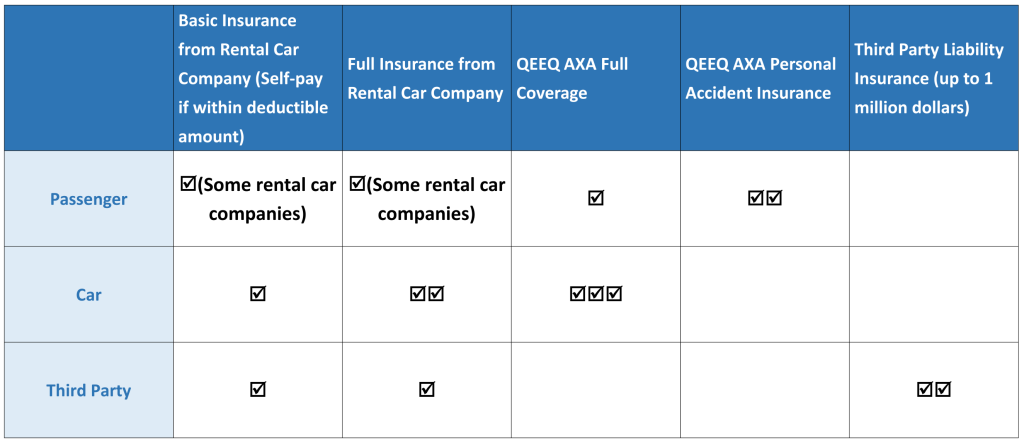
When and How to Purchase Insurance
There are two ways to obtain insurance: one is to purchase insurance when booking the car online; the other is to purchase insurance at the local store where the car is rented when picking up the car.
Generally, insurances provided by rental car companies usually has narrower coverage, higher premiums, so purchasing insurance online when booking the car is highly recommended.
How to Choose Insurance
If you are traveling with limited budget, it is better to choose the kind of insurance policy with the most comprehensive coverage. The main reasons are:
- Repairing fee for the car would probably be higher abroad.
- In case of an accident, the medical cost and compensation are very high.
- The wider the coverage, the less the troubles you would deal with, which saves tons of time and energy.
Taking automobile insurance as an instance, comparing to common insurance policies, the most comprehensive insurance coverage, including glasses, tires, chassis protection, and considerations for special road conditions such as sand and rocks, is very necessary, but basic insurance of car rental companies usually does not include full coverage as such.
Picking Up the Car
Check Before Departure
Before proceeding to the car rental shop, make sure you have brought with you all necessary documents for picking up the vehicle, and two international credit cards is recommended to ensure that there is enough credit limit for pre-authorization.
Proceed to the Car Rentals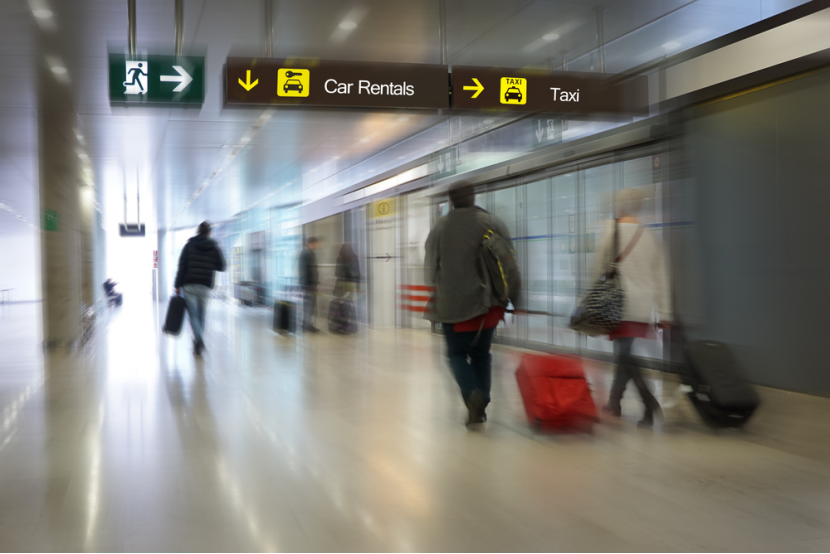
If there is a pickup store nearby, you could just walk there, following signs for airport rental cars.
If the rental car center is far away, there is usually a free shuttle bus bound for the rental car center. Shuttle buses run every 10 minutes approximately, so take the bus when you see the logo of your car rental company.
If the shuttle is not available, you can contact the car rental company and wait for staff member to pick you up at designated location. In case you have difficulty communicating with the store staff, please call QEEQ and we will assist you in English or other languages.
Inspect the Car
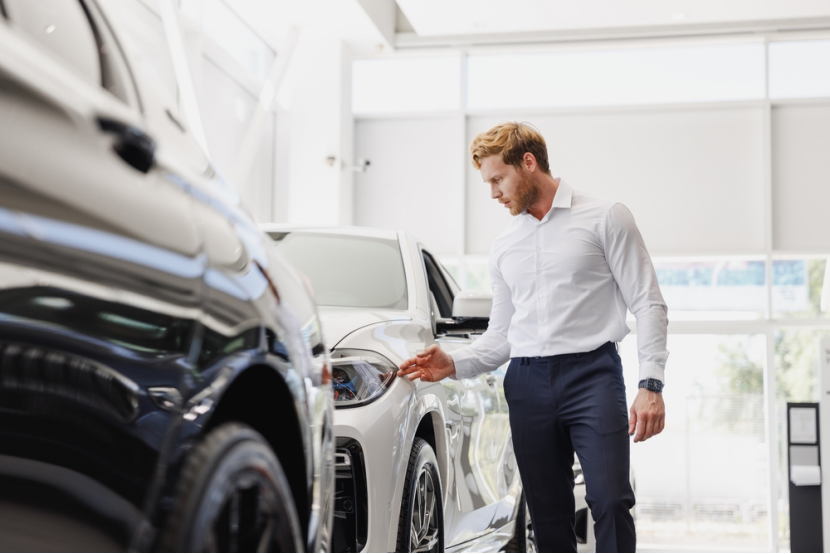
When you receive your reserved vehicle, inspect the bodywork for damage. At that time, it’s a good idea to document the entire process with your smartphone camera or take a picture of the dashboard. Because if you forgot to check the condition of your vehicle before departure, you may be charged for wronged damage repairs when you return it.
Payment 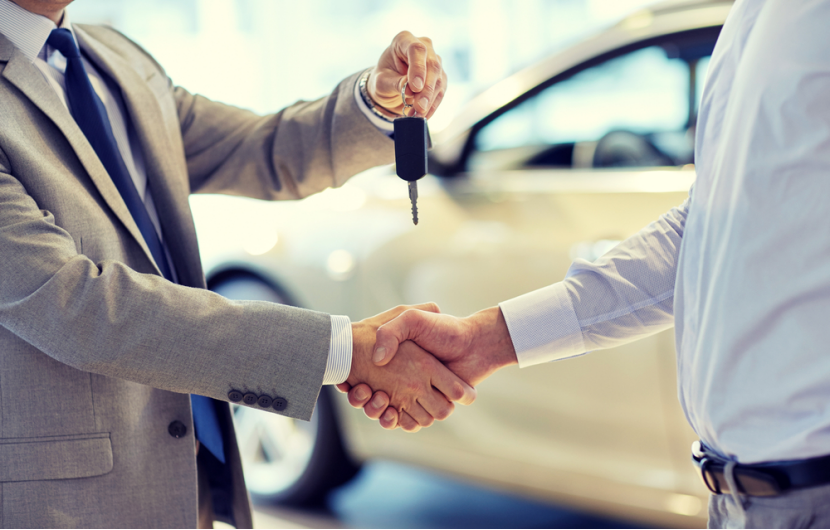
Payment is due on the day of the rental unless you are paying online or purchasing a tour package.
Insurance is usually included in the rental price, but some car rental companies offer paid options for more comprehensive coverage.
Last but not least, keep all contracts and documents safe for possible further usage. Once you have received your keys, check the seat heights, mirror positions, secure child seats, and then you are ready to go!
Traffic Rules and Signs
Cross-Border Travel Tips
When booking your rental car, make sure to select the option for “Cross-Border Travel” to see if the vehicle is permitted to be driven into other countries.
Important Tips:
- When you pick up your rental car, inform the staff that you plan to drive across borders. If you don’t, your insurance might become invalid once you leave the country.
- Cross-border fees need to be paid at the local rental office after you cross the border. Be sure to confirm the exact costs with the staff at the local office.
If the car you want to rent isn’t allowed for cross-border travel, it could be due to the rental company’s policies or restrictions on that specific vehicle model. In such cases, try choosing a different rental company or a different vehicle model.
Traffic Rules
- Drive on the Right
In France, please remember to drive on the right side of the road, with the driver’s seat positioned on the left.
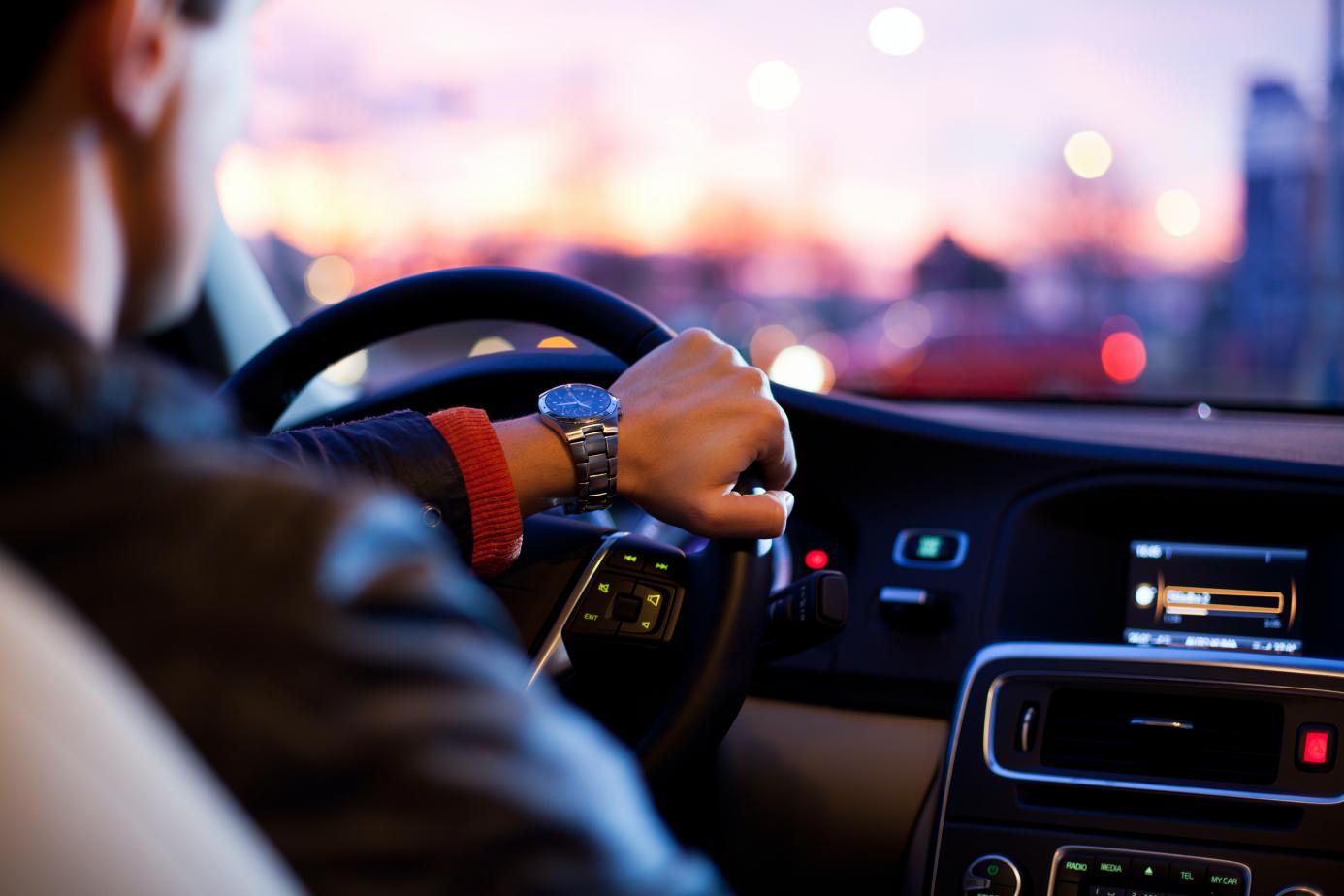
- Pedestrians Have Priority
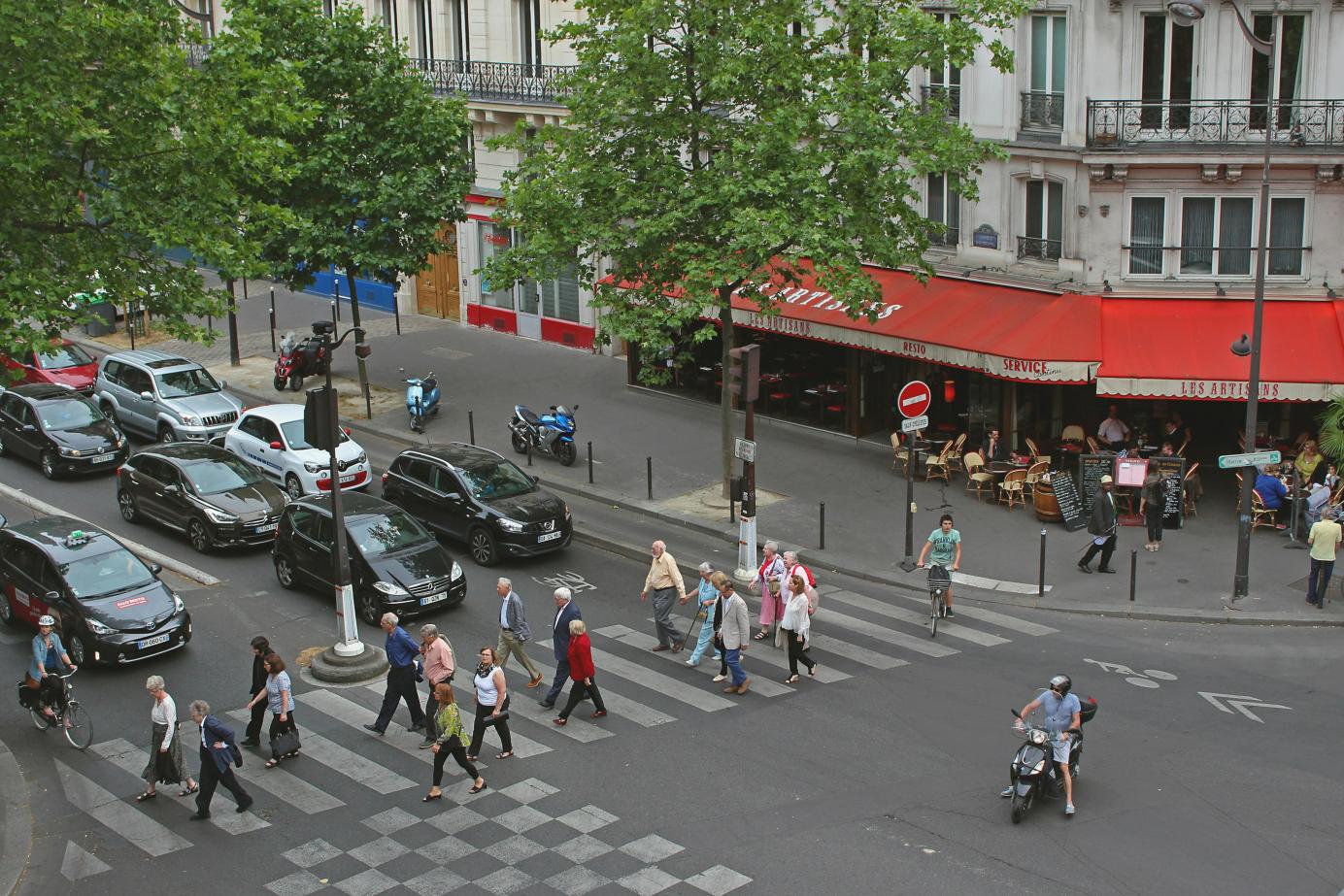
Always give way to pedestrians. They have the right of way, so be prepared to stop for them at crosswalks and intersections.
- Always Wear Seat Belts
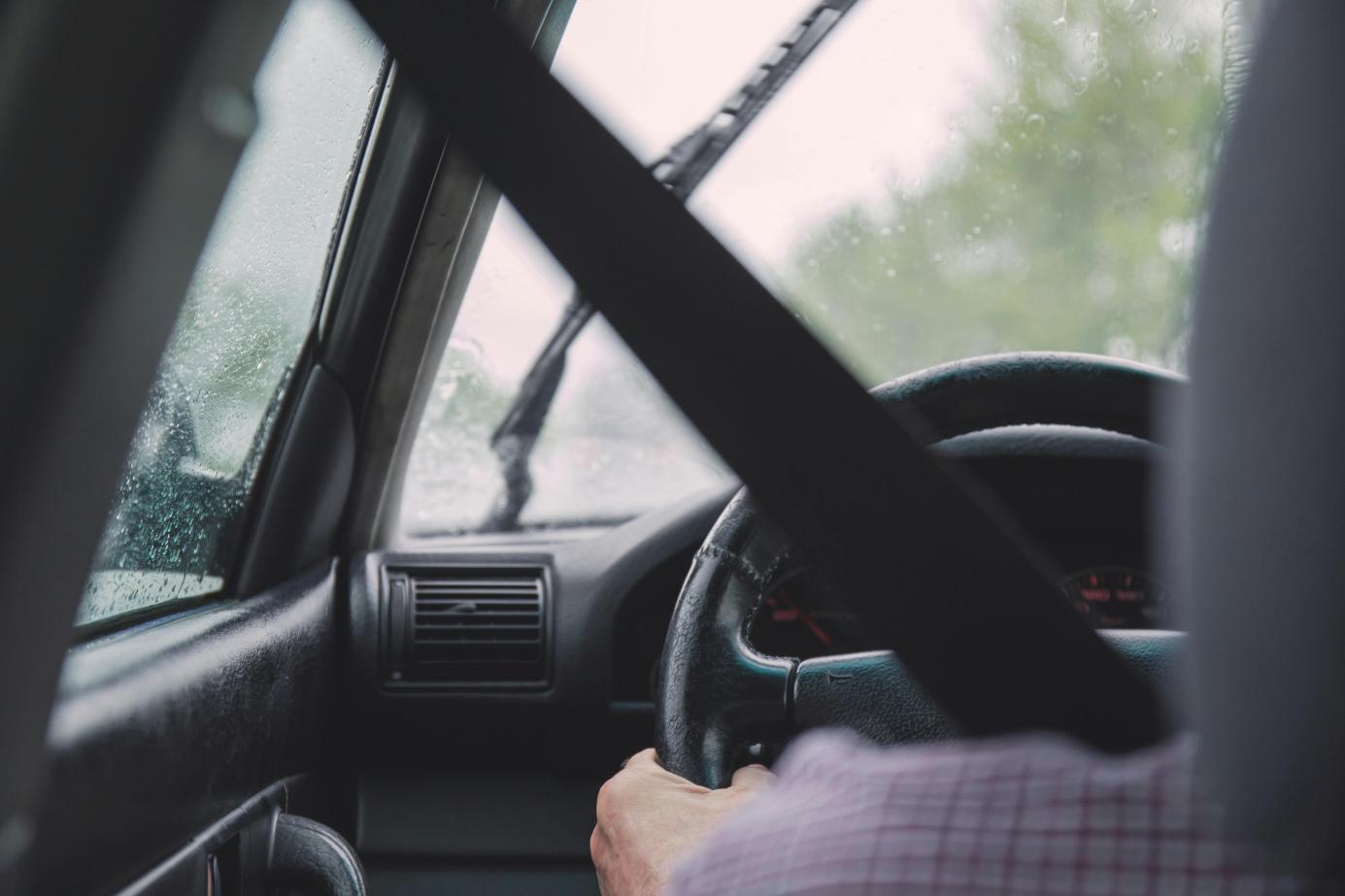
Everyone in the car must wear a seat belt, including passengers in the back seats.
- Child Safety Seats
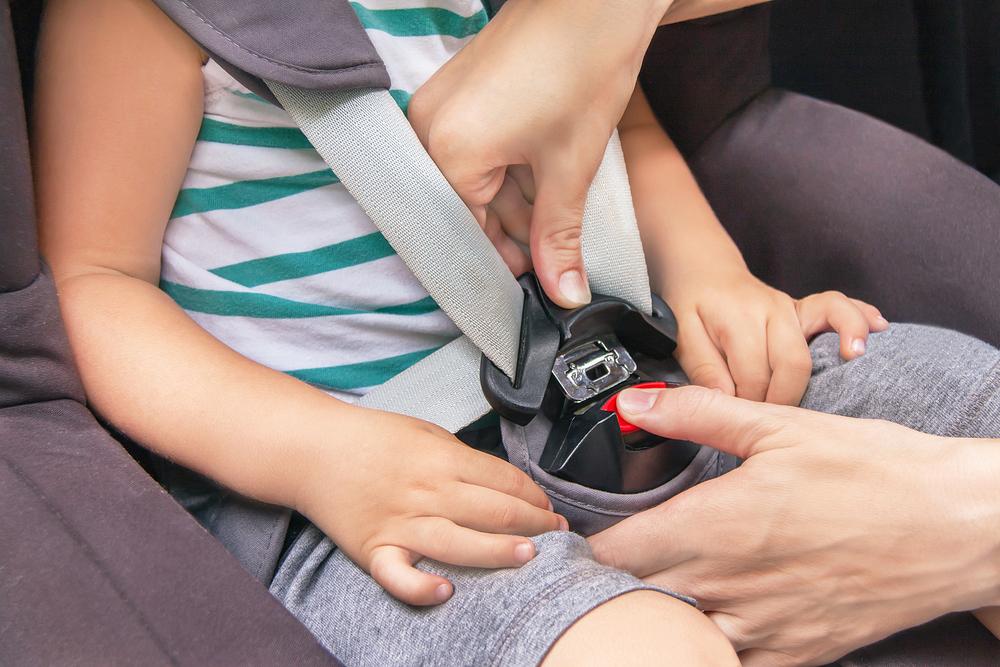
Children under the age of 7 must use appropriate child safety seats and can only sit in the back seat.
- Avoid Using Designated Lanes
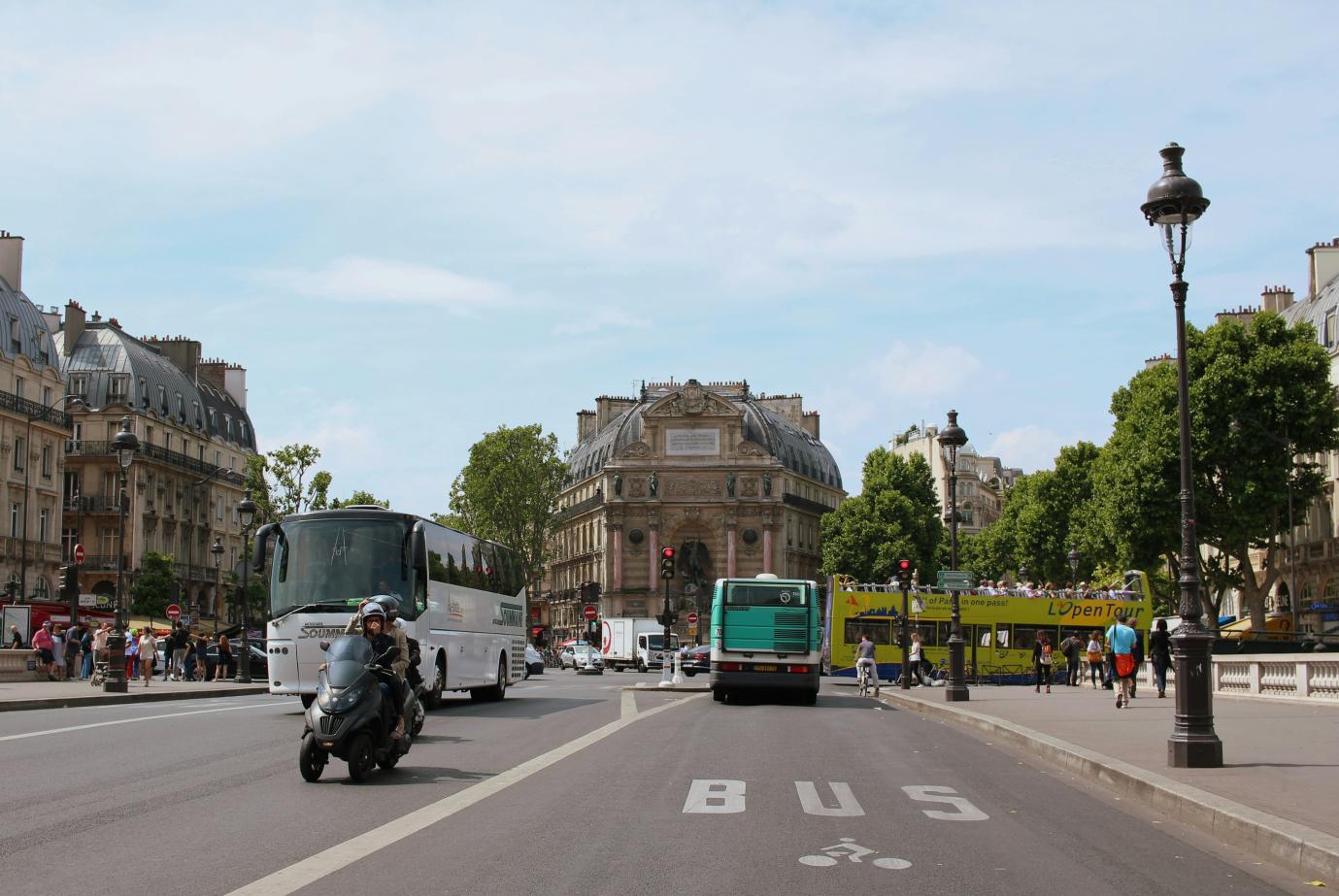
In France, lanes marked with “BUS” are reserved for buses and taxis. It’s important for regular vehicles to avoid these lanes to prevent fines and ensure smooth traffic flow.
- Yield to Emergency Vehicles
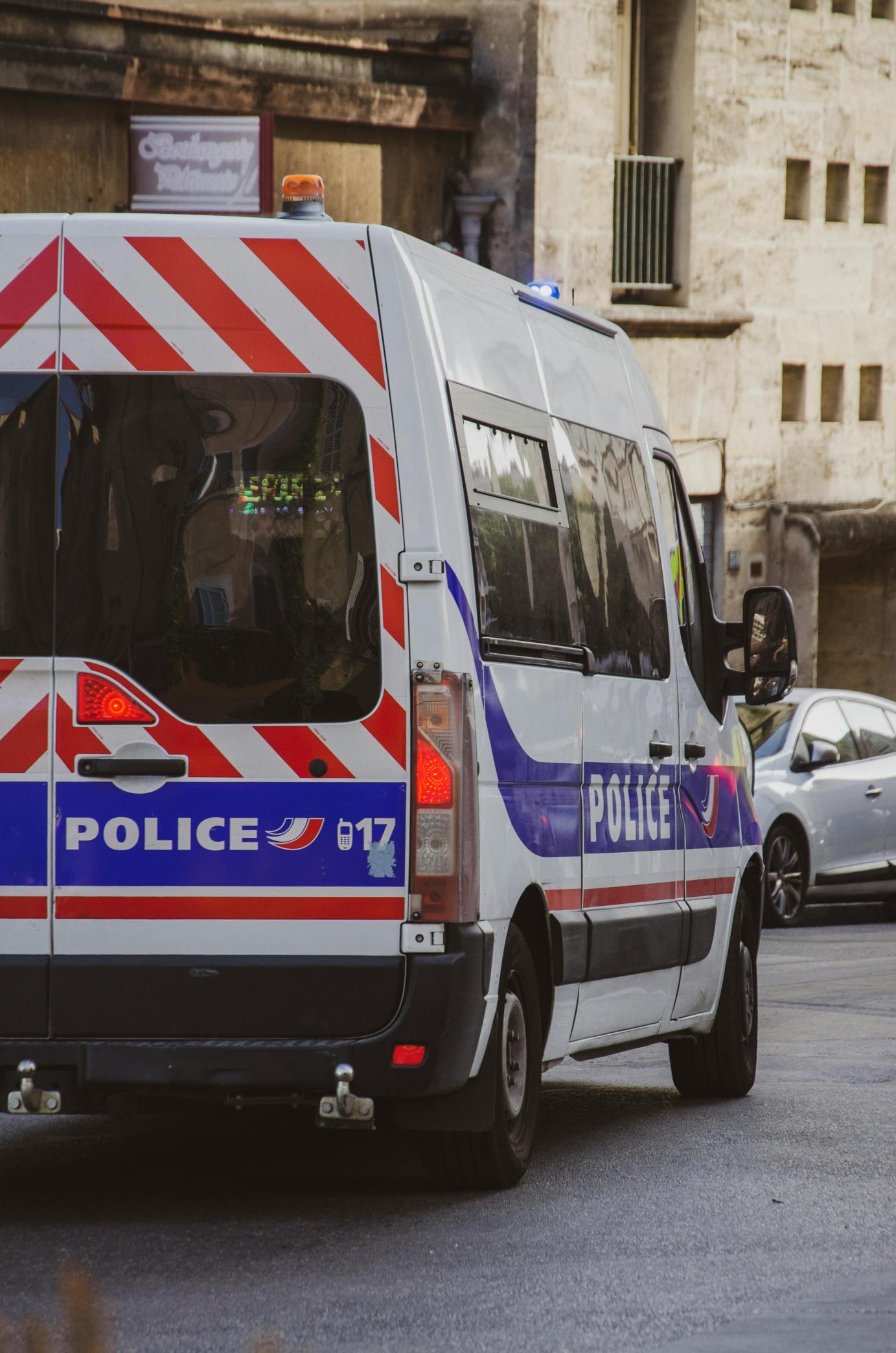
If an emergency vehicle, such as a police car, fire truck, or ambulance, approaches with sirens from behind, immediately pull over to allow it to pass. Resume normal driving only after the emergency vehicle has safely passed.
- Respect the Right of Way
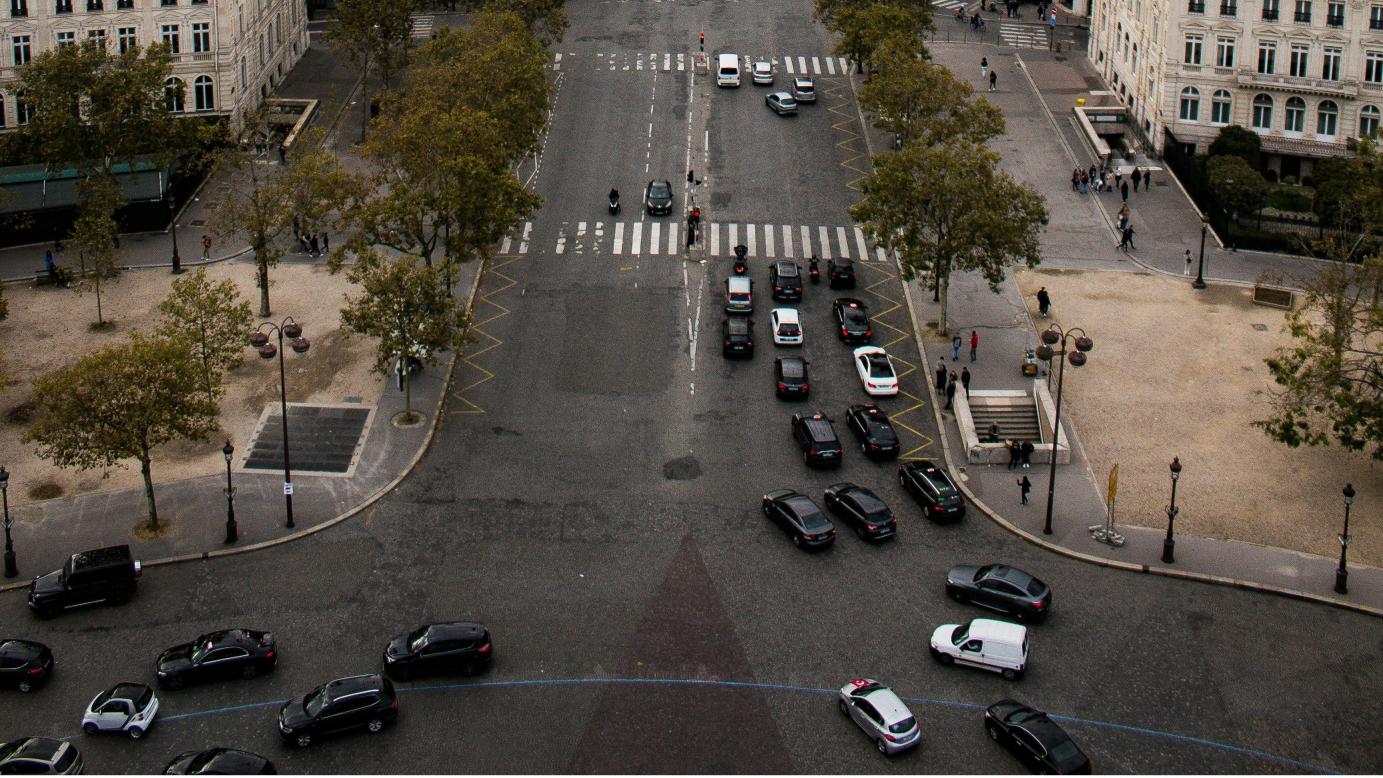
Right of way holds significant importance on French roads. Whether or not there’s signage, the vehicle with the right of way has priority. Key rules to remember include yielding to straight-ahead drivers when turning, giving way from side roads to main roads, and yielding to traffic already in the roundabout. The French take these right-of-way rules seriously, often maintaining speed if they have priority. To avoid accidents, be vigilant and concede if you do not have the right of way.
Signs
- STOP Signs
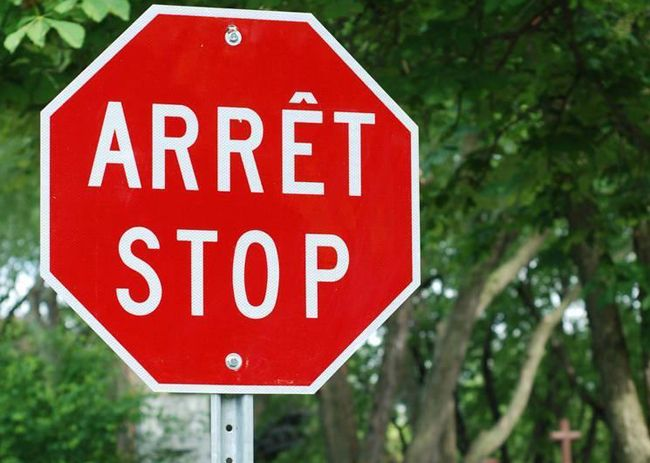
At STOP signs, it’s required to come to a complete halt for at least three seconds. Look both ways and proceed only when safe. If a four-way intersection has STOP signs in all directions, vehicles should take turns moving forward based on the order of arrival. When vehicles arrive simultaneously from different directions, alternate in passing through the intersection instead of following the queue order.
- Yield Signs
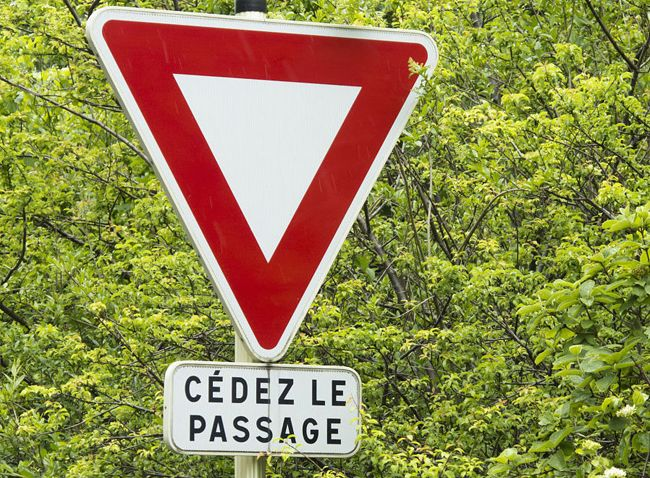
Yield signs are often found where side roads meet main roads. It’s essential to slow down, prepare to stop if necessary, and give way to other vehicles and pedestrians to ensure safety before proceeding.
- Roundabouts
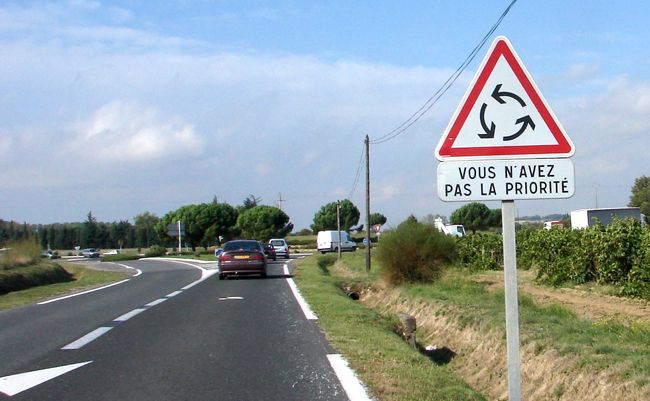
France features many roundabouts on national and provincial roads. Vehicles inside the roundabout have the right of way. It’s important to yield to them when entering. Keep an eye on the exit signs and turn right to leave the roundabout. If unsure of your exit, you can circle the roundabout multiple times to identify the correct exit.
- Speed Limits
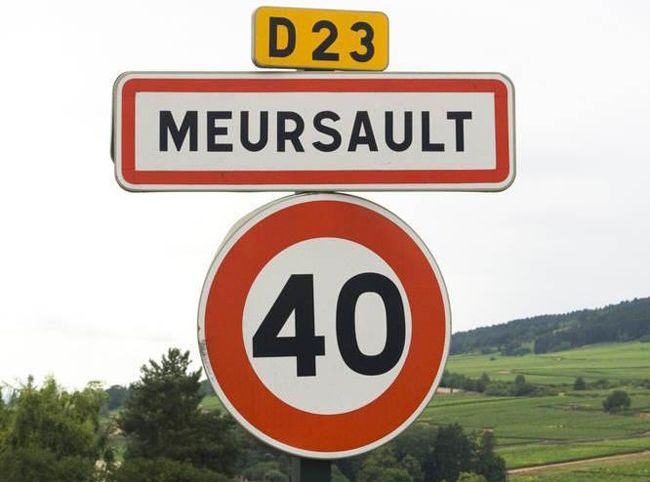
Pay attention to speed limits posted along roads. France enforces strict speed regulations. Generally, the speed limit is 130 km/h on highways, 80 km/h on main roads, and 50 km/h in urban areas. In adverse weather conditions like rain, snow, or fog, speed limits are significantly reduced. Note that speed limits can vary frequently, which might be challenging for newcomers to adapt to. Be cautious to prevent fines and always watch for changes in speed limit signage.
- Other Common Signs
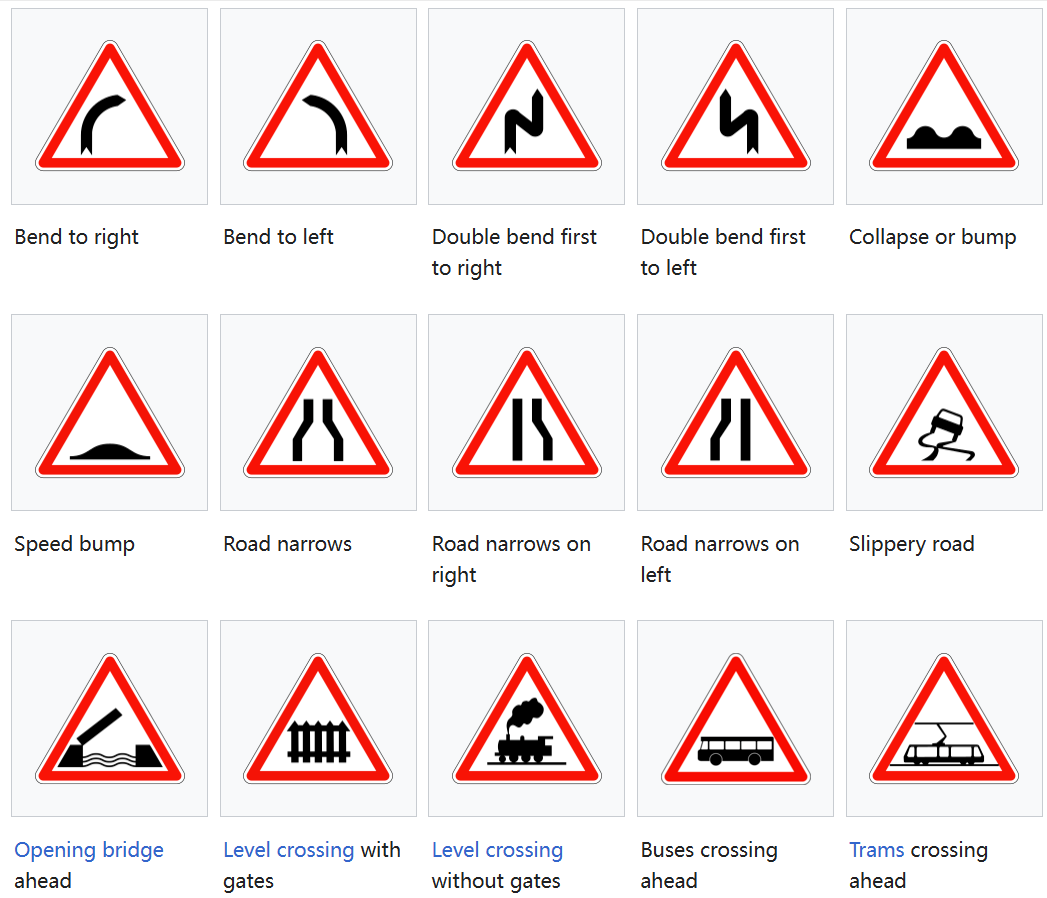
Source: https: //www.rac.co.uk/drive/travel/driving-in-europe/guide-to-french-road-signs-useful-phrases-for-your-road-trip/
For more road signs in France, please refer to: French road signs | Useful French phrases | RAC Drive
Road Conditions and Toll Payments
Road Conditions
- Motorway Conditions
French motorways are well-maintained with broad, smooth surfaces and clear signage, ideal for self-driving. Traffic flow is generally moderate, enhancing the driving experience.
- Urban Driving Challenges
In urban, especially historic areas, roads are often narrow with many one-way streets. Drivers should be cautious as GPS signals can sometimes be disrupted by buildings, necessitating a keen eye for traffic signs.
- Types of Roads
- Motorways (A roads): Typically four-lane or more, and often require toll payment.
- National Roads (N roads): Without central dividers, requiring vigilance for merging traffic and pedestrians, and mindful speed management.
- Departmental Roads (D roads): Serve as main routes in cities and connectors between towns, often showcasing scenic views.
Toll Payments
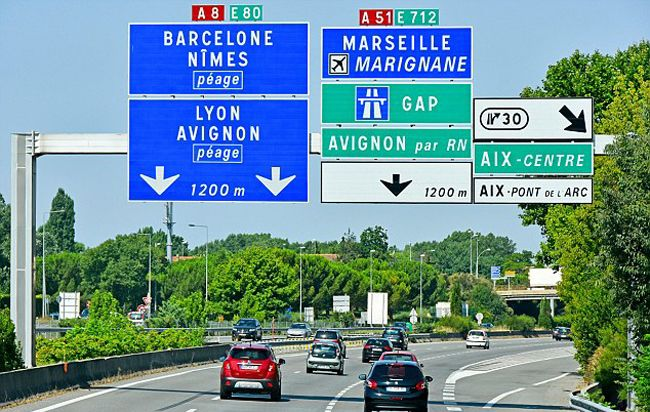
France is known for extensive toll roads, with most motorways requiring toll payment, currently around €5 per 100 kilometers.
To avoid tolls, set your navigation to bypass roads beginning with “A” and travel via “N” or “D” roads.
How to Pay Tolls in France
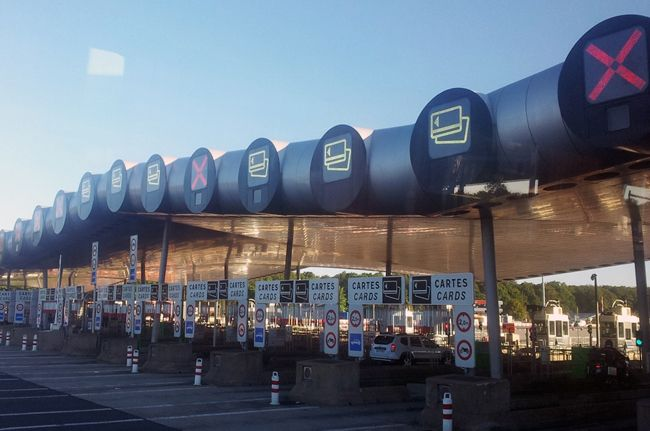
Collect a ticket at the motorway entrance. Upon exiting, pay at a toll booth using one of the following methods:
- Electronic Tolling (Télépéage): For frequent travelers with an electronic tag; occasional users should avoid these lanes.
- Credit Card Payment: Accepts Visa and MasterCard, with quick, password-free transactions.
- Cash Payment: Available at staffed booths allowing cash or card use. Cash is recommended as some areas may not accept certain international cards.
For a speedy process, use cash at manual toll booths, especially if your card might be declined on specific routes.
Fueling
Fueling Services
In France, you’ll find numerous gas stations like Total, Shell, and Esso. Fuel prices vary across regions and brands, with diesel typically costing 10-15% less than petrol. Prices tend to be higher during rush hours, weekends, and in city centers, as well as on highways and near tourist hotspots. To avoid delays or higher costs, it’s a good idea to refuel before your tank is nearly empty—keep an eye out for competitively priced stations along your route.
Fuel Options
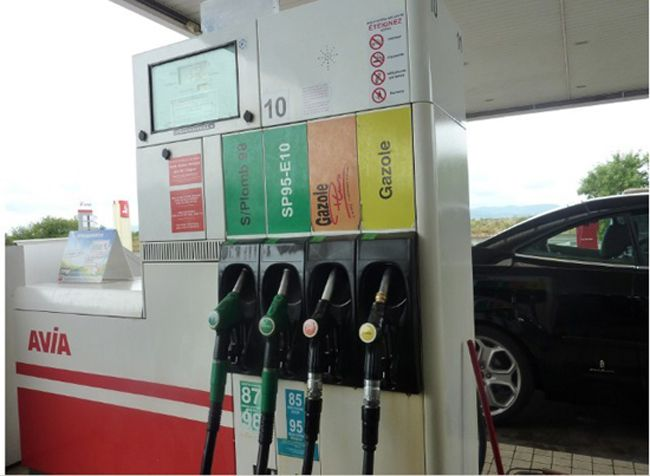
About 80% of vehicles in France run on petrol, not diesel. Petrol pumps are marked with “ESSENCE” or “SP95/SP98” (green nozzle), while diesel is labeled “DIESEL” or “GAZOLE” (yellow or black nozzle). Always use the fuel type indicated on your vehicle’s fuel cap or in the manual. If you’re unsure, ask the rental agency staff when picking up the car. Filling with the wrong fuel can cause damage, so contact the rental company immediately if a mistake happens.
Self-Service Refueling
French gas stations are typically self-service. For cash payments, note the pump number and pay inside before fueling. For card transactions, simply follow the on-screen prompts after inserting your card, then proceed to fuel your vehicle.
Parking Guidelines
Where to Park
- Public Parking Lots
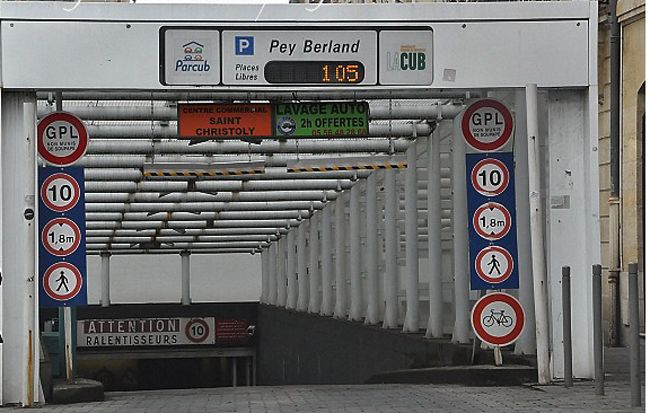
Shopping malls and large supermarkets often provide free parking. Tourist areas usually have paid parking options.
- Street Parking
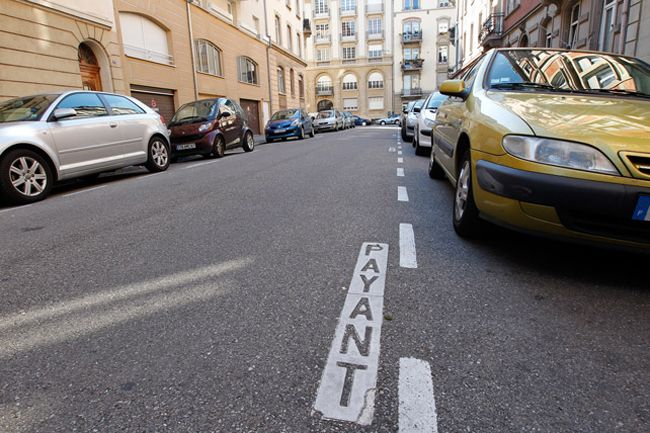
Look for “PAYANT” signs for paid street parking. Use nearby machines to pay and display the ticket on your dashboard.
- Timed Free Parking
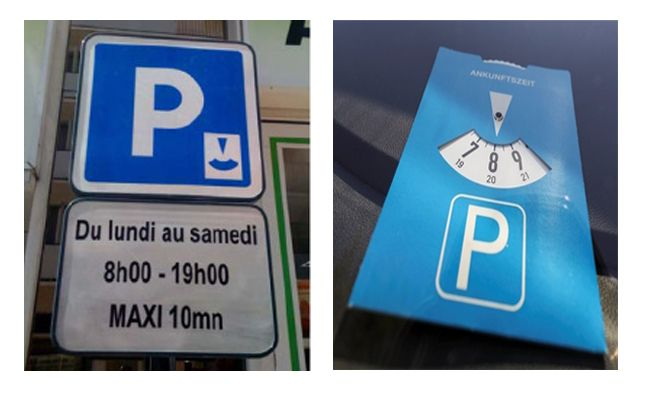
Some places offer limited free parking. For example, you might get 10 minutes free from Monday to Saturday, 8 AM to 7 PM. Use a parking disc on your dashboard to show your arrival time.
Where not to Park
- Do not park in disabled spaces, at building entrances, next to hydrants, bus stops, or where “LIVRAISON” indicates loading zones.
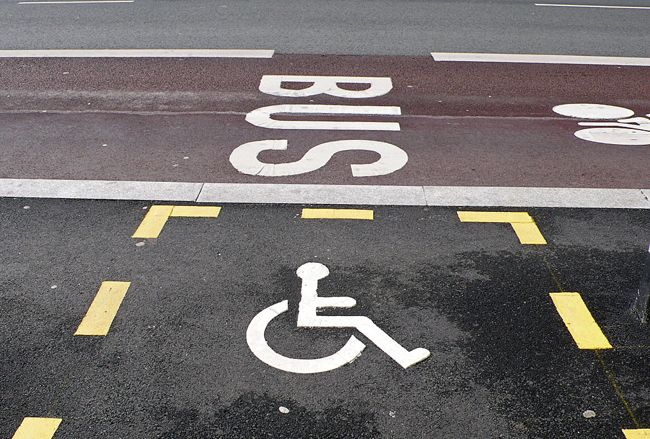
- Areas with yellow lines prohibit parking and may result in your car being towed.
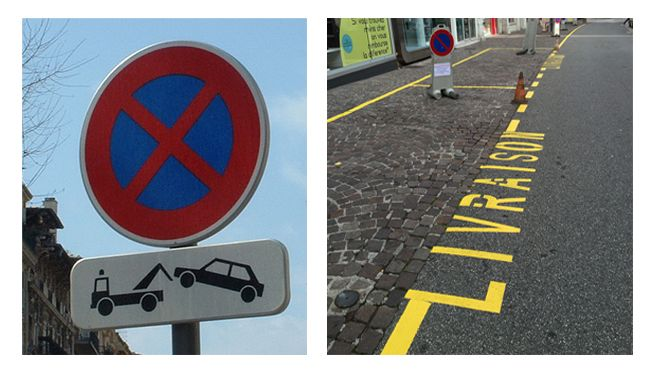
Parking Payment
- Typical rates in city areas are around €2 per hour, with cheaper options outside urban centers. Parking is often free on weekends, holidays, and throughout August.
- Payment is generally automated and can be made with cash or credit cards.
- In large parking structures, take a ticket upon entry, pay before exiting, and use the paid ticket to leave. For open-air parking, pay and display your ticket on the dashboard.
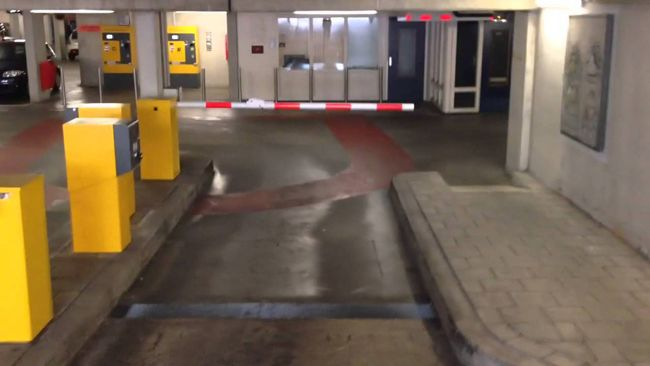
Parking Tips
Navigating and parking in central Paris can be challenging due to traffic and complex streets. Plan your parking in advance to save time and expenses. Never leave valuables in your car to prevent theft.
Accident Handling
If you are involved in a traffic accident, do not panic. Check whether the passengers are injured, help yourself and seek help from passersby. Emergency contacts are available at any time.
- Emergency services (+33 France country code)
SAMU (medical emergencies): 15
Police emergency: 17
Fire brigade: 18
European emergency number: 112
Emergency number for the deaf and hard of hearing: 114
For emergencies at sea: 196
For aeronautical emergencies: 191
- Embassy Numbers by Country
List of Foreign Embassies and Consulates in Paris
- You can also call your car rental company
For the rental company’s phone, please refer to your rental confirmation.
Here are the steps to handle different types of accidents:
Minor Collisions
- Ensure everyone’s safety.
- Move the vehicle to the side of the road to avoid obstructing traffic.
- Call 17 to report the accident.
- Take photos or videos of the vehicle’s condition.
- Have the police document the accident and keep the accident report.
- Contact the rental company and your insurance provider.
Vehicle Break-Ins or Theft
- Call 17 to report the incident.
- Have the police document the incident.
- File an insurance claim.
- Verify the information.
- Receive compensation.
Vehicle Breakdown
- Open the car’s trunk and hood.
- Hang a white object on the door handle to signal for help.
- Call the rental company.
- The rental company will dispatch staff for towing or repairs.
If the rental company cannot resolve the issue, ask the police for towing assistance. Repair costs can be high, so having full insurance is important.
Car Return Process
Important Reminders
After your enjoyable road trip, it’s essential to return the vehicle on time. If you have any questions or need assistance, you can contact the 24-hour customer service hotline.
Car Return Tips
- Refuel Before Returning
If your rental agreement requires a full tank upon return, make sure to refuel within 5 kilometers of the drop-off location and keep the receipt to show the rental staff.
- Keep the Car Clean
Return the car in a clean condition to avoid cleaning fees. Note that smoking in the car may also result in additional charges.
- Reconcile the Fee
When you return the car, the staff will inspect it and provide a final invoice. Carefully review the invoice and address any discrepancies immediately or contact customer service for clarification.
- Keep the Contract and Document
Retain the rental agreement and receipts after returning the car for future reference.
Early or Late Return
- Early Returns
Returning the car early usually does not result in a refund for unused days.
- Late Returns
If you need to return the car late, call the rental location in advance to get approval and confirm any additional charges.
After-Hours Returns
If you can’t return the car during business hours, check if the rental location allows after-hours returns. If permitted,
- Park in the designated area
- Lock the car
- Take photos of the fuel gauge, odometer, and car exterior
- Drop the keys in the key/drop-off box.
Note that you are responsible for the car until the rental location reopens. To avoid issues, it’s best to return the car when staff are present.
Help after Trip
Traffic Citation
- Immediate Fines
If you receive a parking or other on-the-spot fine in France, head to a local Tabac (a small kiosk or convenience store) to purchase a Timbre Fiscal (tax stamp) and a regular postage stamp. Affix the tax stamp in the larger box and the postage stamp in the smaller box on the upper right of the fine notice. Mail the completed notice to the specified address. Keep the stubs from both the fine and the tax stamp as your proof of payment.
- Fines Received by Mail After Leaving France
If a fine arrives by mail once you’ve returned home, you have online and mobile options to settle it:
- Online: Go to Site officiel unique de télépaiement | Amendes.gouv.fr and switch the site language to English. Follow the instructions to complete your payment.
- Mobile App: Download the “amendes.gouv” app. Enter your ticket number or scan the QR code to pay.
- Tips for Avoiding and Managing Fines
Before setting off, check your route for toll roads and bridges, and familiarize yourself with common driving violations to avoid unexpected fines. Should you receive a fine, it’s best to pay it promptly to avoid incurring additional late fees.
For the latest information and payment methods, visit ANTAI : Agence nationale de traitement automatisé des infractions | ANTAI.gouv.fr for updates.
- Unknown Charges after Trip
If you received an unexpected deduction when you return to your home country, it might be that your violation fee is paid by the car rental company, but usually the deduction amount will be more expensive than the violation fee because that includes the management fee charged by the car rental company. If you don’t know what the violation was, you can contact our customer service for help.
Insurance Claim
If you bought a full coverage insurance, you would receive a fast claim settlement. The following documents should be prepared:
- Passport
- Driver’s License
- Credit Card Checkback History
- The Car Rental Contract
- Car Damage Deduction Bill
For more detailed information, check the terms and conditions of insurance company:
https://www.qeeq.com/term?info=axa_policy&browser_open=1
Classic Routes
- Northern France
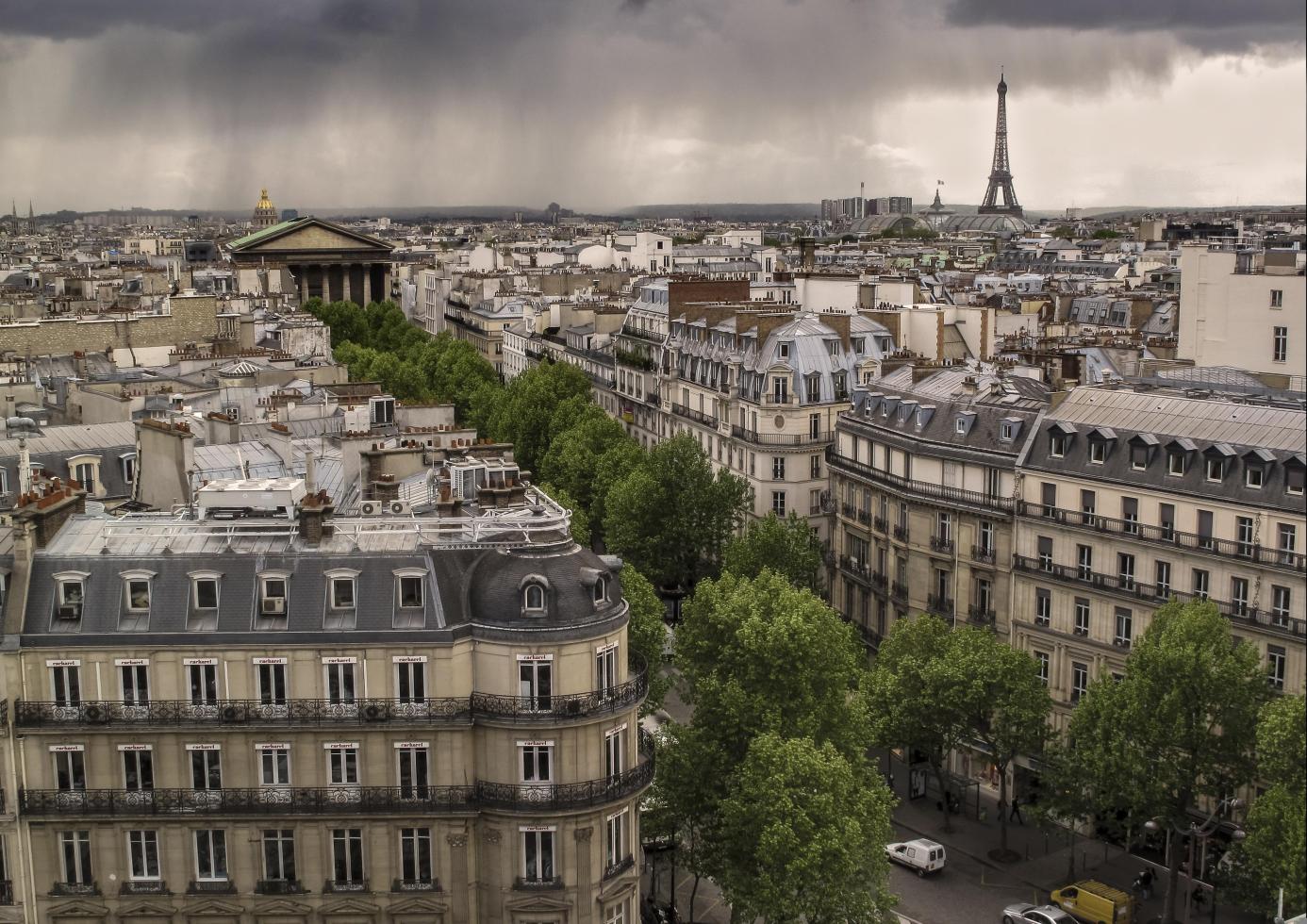
This captivating route through northern France, starting and ending in Paris, offers a journey rich with cultural and artistic heritage. The itinerary includes wonders such as the Musée d’Orsay, where the grandeur of a former train station combines with Impressionist masterpieces by the likes of Van Gogh and Monet. The iconic Louvre beckons with its harmonious blend of classic and modern architecture, home to the timeless Mona Lisa. Giverny’s stunning gardens provide a more vivid backdrop than even Monet’s paintings can capture. Rouen’s Joan of Arc Church stands as a solemn tribute adorned with exquisite Renaissance stained glass. In Amiens, the Jules Verne House invites you into the imaginative world of its namesake’s adventures. Finally, the trip concludes in the lush Champagne region with a visit to Reims, where sprawling vineyards are complemented by whimsical castle-like structures.
- Central France
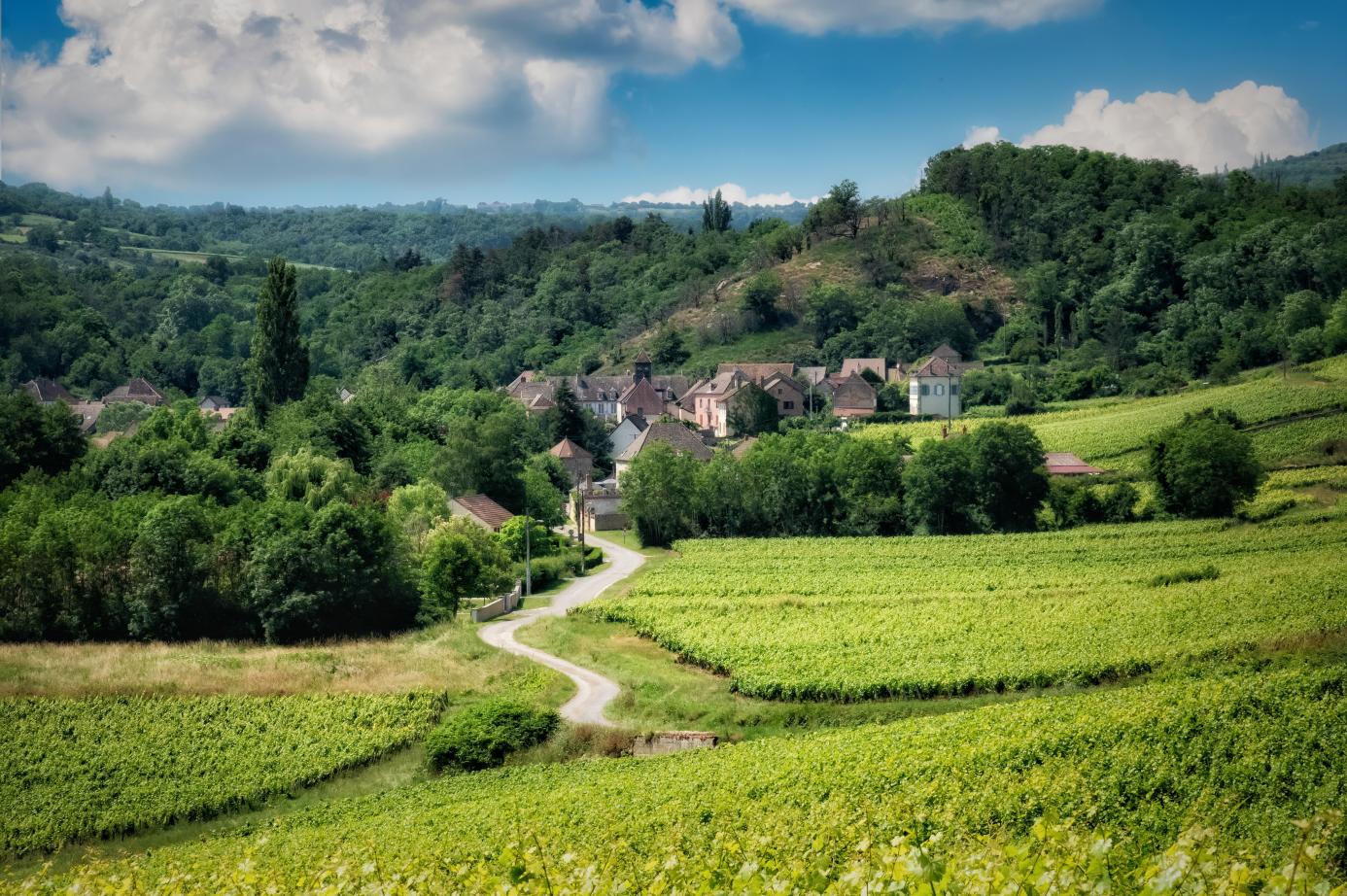
The journey through the heart of central France begins in the vibrant city of Lyon, where visitors can explore the charming Miniature World, a meticulously crafted universe in miniature form. From there, the route leads to Burgundy, renowned for the prestigious Pommard Winery, where vast vineyards and acclaimed wines captivate travelers. Continuing onward to Bourges, serene wetlands known as the “Wuzhen of France” offer a peaceful retreat amidst nature’s beauty. In Tours, the spectacular Château de Chenonceau graces the landscape, a magnificent castle elegantly spanning the waters with its classic design and enchanting allure. The adventure finds its final destination in Nantes at the distinguished Passage Pommeraye, where its elegant architecture and dreamy sky-blue corridor serve as a cinematic backdrop, offering travelers a final taste of central France’s rich cultural tapestry.
- South of France
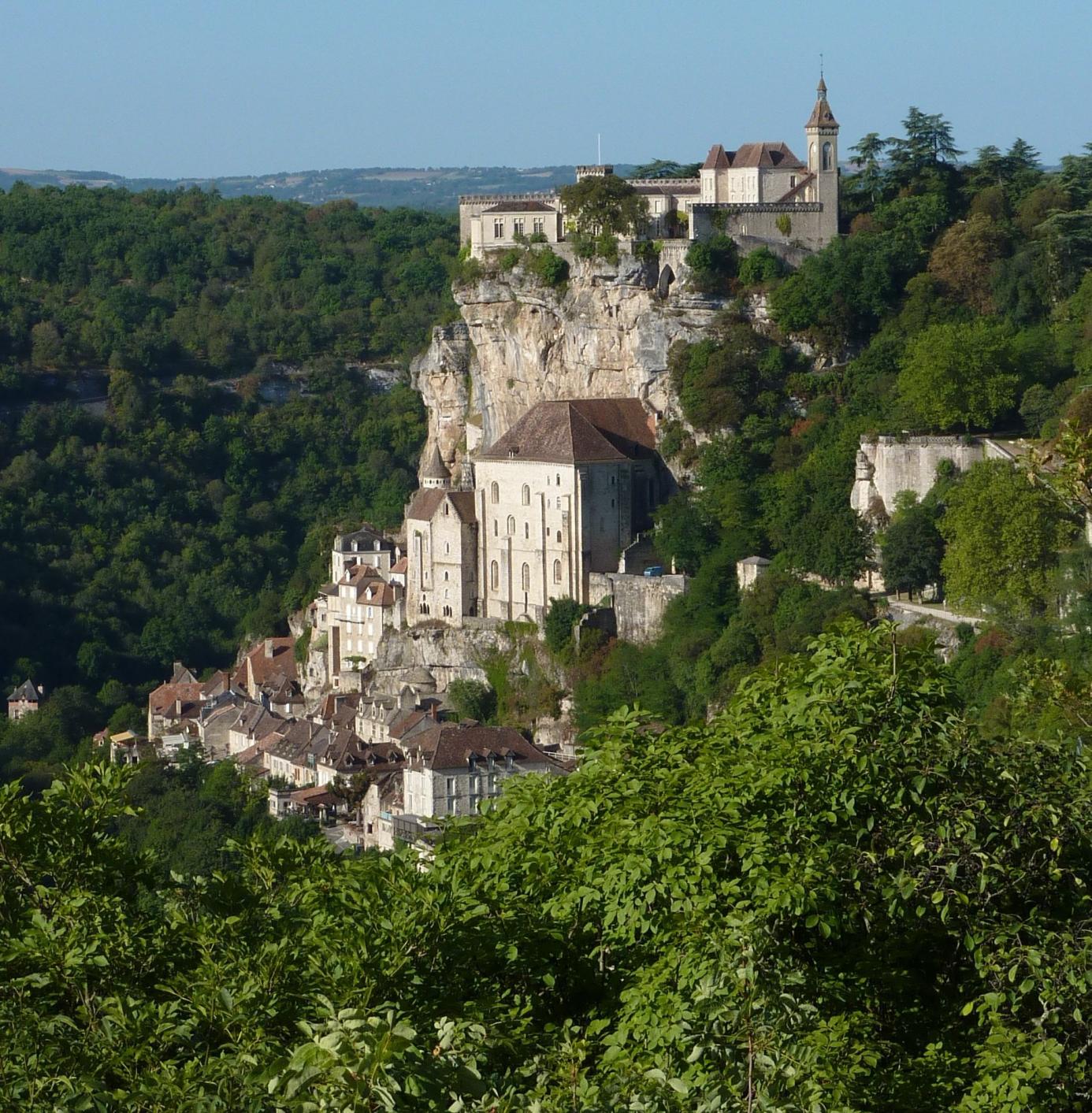
The adventure through the south of France unfolds with a journey beginning in Toulouse, renowned as the “Pink City” for its mesmerizing town hall built from red bricks that gracefully change color with the light. In Montpellier, the historic Place du Peyrou offers a fusion of classic charm and views stretching to the distant Alps and Pyrenees. At Valensole, vast lavender fields bloom into an ocean of purple during the summer, creating an ethereal landscape. Cannes captivates with the allure of the Palais des Festivals, set against the glistening Côte d’Azur, where the magic of the film world comes alive. The route also highlights Eze, the Mediterranean’s vantage point, offering breathtaking views and unique charm. Finishing in Nice, Castle Hill provides an amalgamation of ancient Greek history and the vibrant Mediterranean atmosphere, with panoramic views of azure waters. This could be complemented by a visit to Grasse, famed for its perfumeries. Throughout this journey, the south of France reveals its tapestry of history, vibrant landscapes, and refined elegance, promising an unforgettable experience brimming with cultural richness and natural splendor.
Useful Website and Numbers
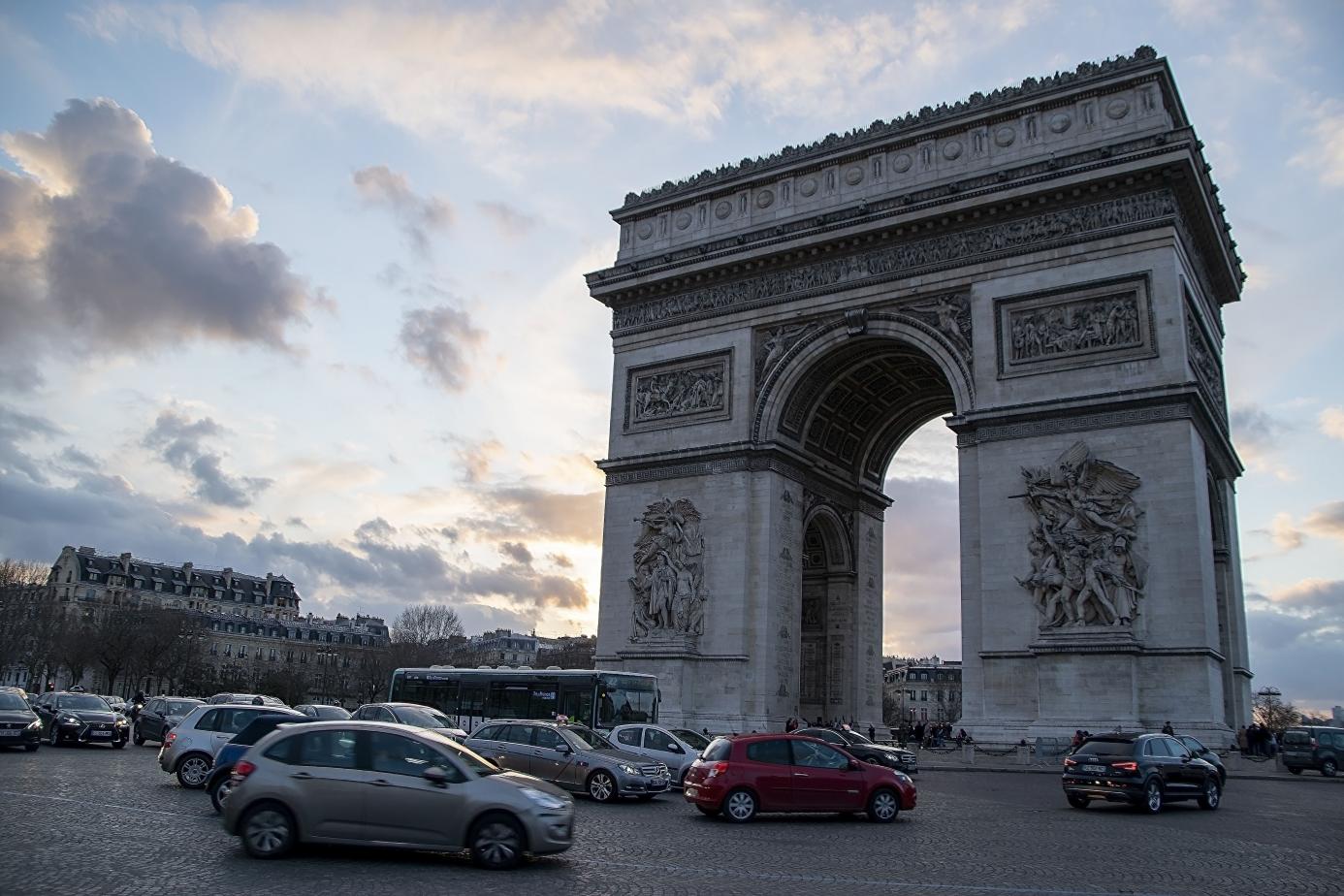
- France’s official tourism website
France.fr : Explore France and its wonders – Explore France
- Emergency services (+33 France country code)
SAMU (medical emergencies): 15
Police emergency: 17
Fire brigade: 18
European emergency number: 112
Emergency number for the deaf and hard of hearing: 114
For emergencies at sea: 196
For aeronautical emergencies: 191
- Embassy Numbers by Country
List of Foreign Embassies and Consulates in Paris
- You can also call your car rental company
For the rental company’s phone, please refer to your rental confirmation.